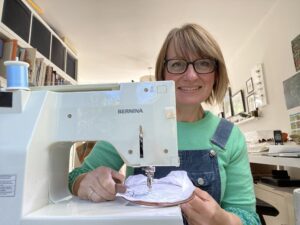The Woman Who Embroiders Nature
A Conversation with Amanda Cobbett
By Cathy Koos
(all photographs courtesy Amanda Cobbett)
A recent stormy Sunday found me on Zoom chatting with textile artist Amanda Cobbett. Amanda lives in the small rural community of Peaslake in Surrey, England.
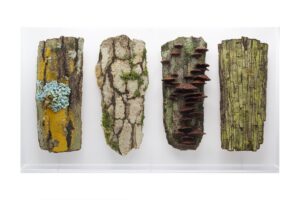
After studying graphic textile design at Chelsea University of Arts, London, Amanda spent a dozen years designing and hand rendering botanical artwork for a prominent London textile company. Her designs were then turned into tablecloths, napkins, household, and fashion textiles.
Amanda grew up in a maker family, with her seamstress mother and grandmother, as well as her draftsman father and engineer grandfather. From the former she learned sewing at the tender age of 4, and from the latter, she learned to understand and create three-dimensional objects.
After 12 years in the textile design world, Amanda took some needed time off to raise her children. The family relocated to the village of Peaslake in rural Surrey. The children attended a private school and salaried the teachers completely by fundraising. Gifted a used Bernina sewing machine, Amanda again drew on her textile designer background creating textiles for fundraising.
Inspired by the natural history collections at Overbeck’s House in nearby Devon, Amanda first began creating three-dimensional birds with machine embroidery. Peaslake is surrounded by the Surrey Hills Area of Outstanding Beauty. Thus, surrounded by stunning woodlands and drawing on her experience as a botanical artist, Amanda considered “if I can make a bird with embroidery, I can make bark.” And so began her journey into embroidering nature.
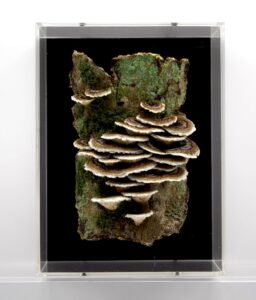
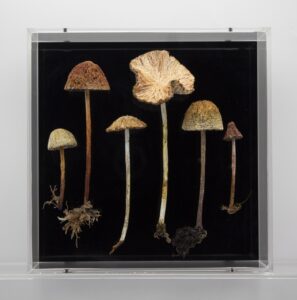
Daily woodland walks with her dogs provide inspiration, spying bits of lichen and moss, as well as a vast array of fungi. Amanda collects very few pieces of downed material, mainly relying on her camera as a record. “Just let go, and beautiful things happen!”
Some of the fungi is based around a papier mache structure and others like the bark are based on a dissolvable matrix that is embroidered with many layers and colors, building up into a dimensional life-like representation of the original forest growth. Each item contains thousands of miles of thread.
Most of her work is commissioned, with many pieces making their way to America to private collections of various celebrities. Annually, she sends pieces to the Detroit Garden Works collection.
Currently, Amanda is working on a sizeable commission for an unnamed duke in Scotland. This conserva
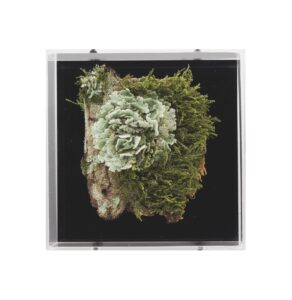
tion-minded gentleman has a large estate with numerous examples of threatened or endangered species. When completed, some of Amanda’s work will rotate out from the Duke’s private collection to be displayed at various galleries in the UK and, possibly, the New York Botanical Garden.
When asked about workshops, Amanda told me that with all the commissions, she really has no time to teach; and the length of time needed to teach and create even a small piece of lichen or moss would require days. Instead, we should each “follow our own creative journey.”

